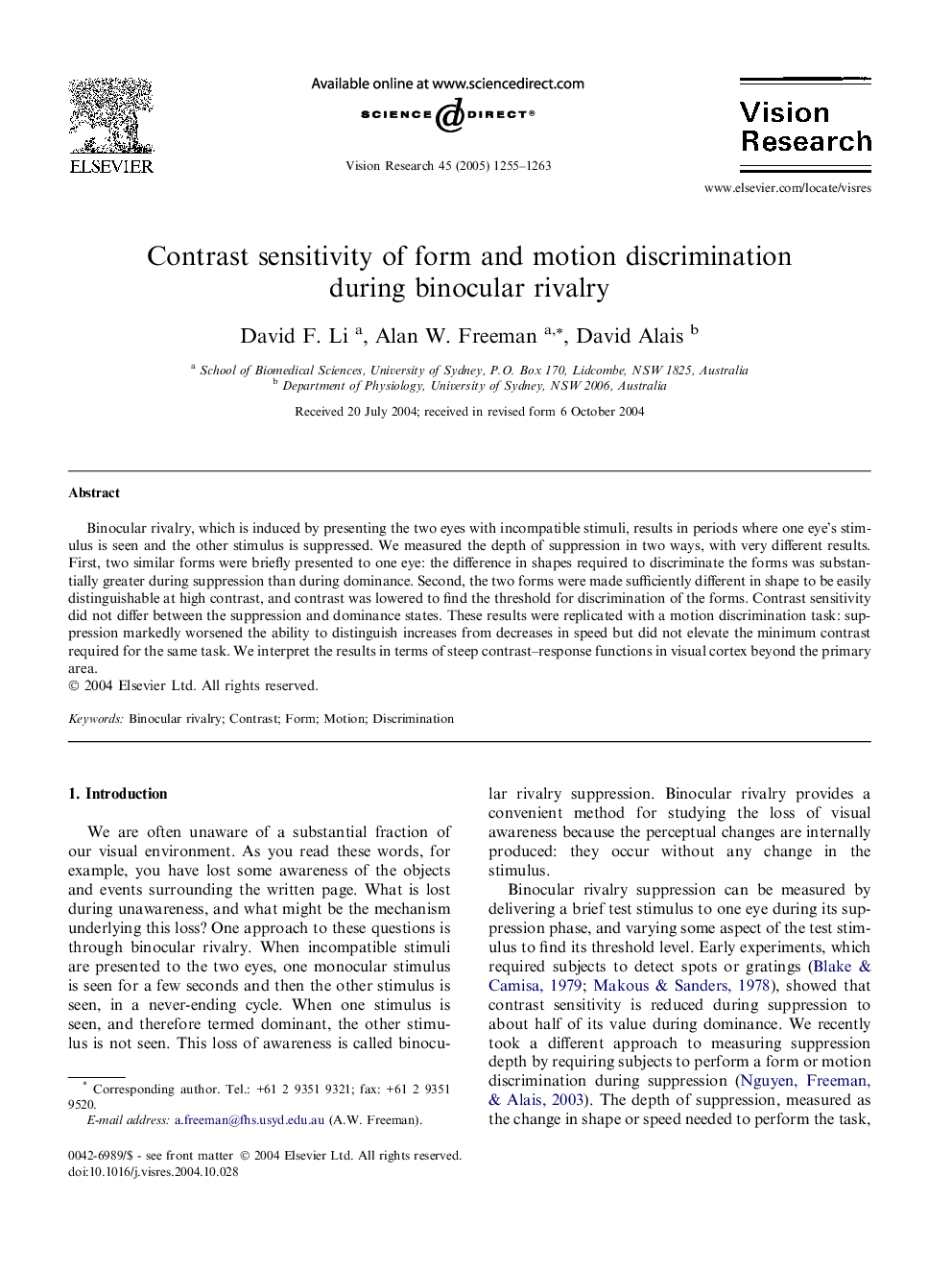| Article ID | Journal | Published Year | Pages | File Type |
|---|---|---|---|---|
| 9348509 | Vision Research | 2005 | 9 Pages |
Abstract
Binocular rivalry, which is induced by presenting the two eyes with incompatible stimuli, results in periods where one eye's stimulus is seen and the other stimulus is suppressed. We measured the depth of suppression in two ways, with very different results. First, two similar forms were briefly presented to one eye: the difference in shapes required to discriminate the forms was substantially greater during suppression than during dominance. Second, the two forms were made sufficiently different in shape to be easily distinguishable at high contrast, and contrast was lowered to find the threshold for discrimination of the forms. Contrast sensitivity did not differ between the suppression and dominance states. These results were replicated with a motion discrimination task: suppression markedly worsened the ability to distinguish increases from decreases in speed but did not elevate the minimum contrast required for the same task. We interpret the results in terms of steep contrast-response functions in visual cortex beyond the primary area.
Related Topics
Life Sciences
Neuroscience
Sensory Systems
Authors
David F. Li, Alan W. Freeman, David Alais,
